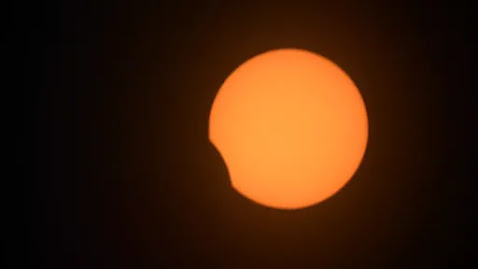Over South America, a rare Black Moon solar eclipse takes a bite out of the sun.
Today, skywatchers in areas of the Southern Hemisphere were treated to the year's first partial eclipse.
The partial solar eclipse of April 30 went over sections of South America, Antarctica, and the Pacific and Atlantic seas, one of two in 2022. In the extreme southeastern Pacific, along the coast of Antarctica, the solar eclipse started around 2:45 p.m. EDT (1845 GMT). According to TimeandDate.com, it lasted little under four hours, finishing at 6:37 p.m. EDT (2237 GMT) over the south Atlantic Ocean, however many witnesses saw the sun set while it was still half obscured.
When the moon passes between the Earth and the sun, a solar eclipse occurs. Today's celestial event was a partial eclipse, which meant that depending on the viewer's position, just a portion of the sun was veiled by the moon. For watchers immediately south of the southern point of South America, the greatest eclipse occurred at 4:41 p.m. EDT (2041 GMT) today, when the moon obstructed nearly 64% of the sun's disc.
Unfortunately for skywatchers, today's eclipse occurred over primarily unpopulated areas in the southeastern Pacific Ocean and Antarctica, as well as several South American nations such as Chile, Argentina, Uruguay, Bolivia, and Peru.
Online broadcasts from Timeanddate.com, which offered views from Santiago, Chile, and parts of Argentina, and the India-based YouTube channel Gyaan ki gareebi Live, which featured views from Cerro Shenolsh in Argentina's Tierra del Fuego province, allowed viewers in the United States and other areas outside the eclipse path to watch the event live.
The eclipse today also occurred to fall on the second new moon of the month, which is known as a Black Moon. A new moon occurs once a month, when the Earth-facing side is completely obscured by shadow. April, on the other hand, began with a new moon on April 1 and finished with a second today.
The next partial solar eclipse will occur on October 25, when the moon will obscure a piece of the sun for watchers in Europe, Western Asia, and Northeast Africa. We won't witness another solar eclipse until 2023 after that. A complete lunar eclipse, on the other hand, is approaching on May 15.


Comments
Post a Comment